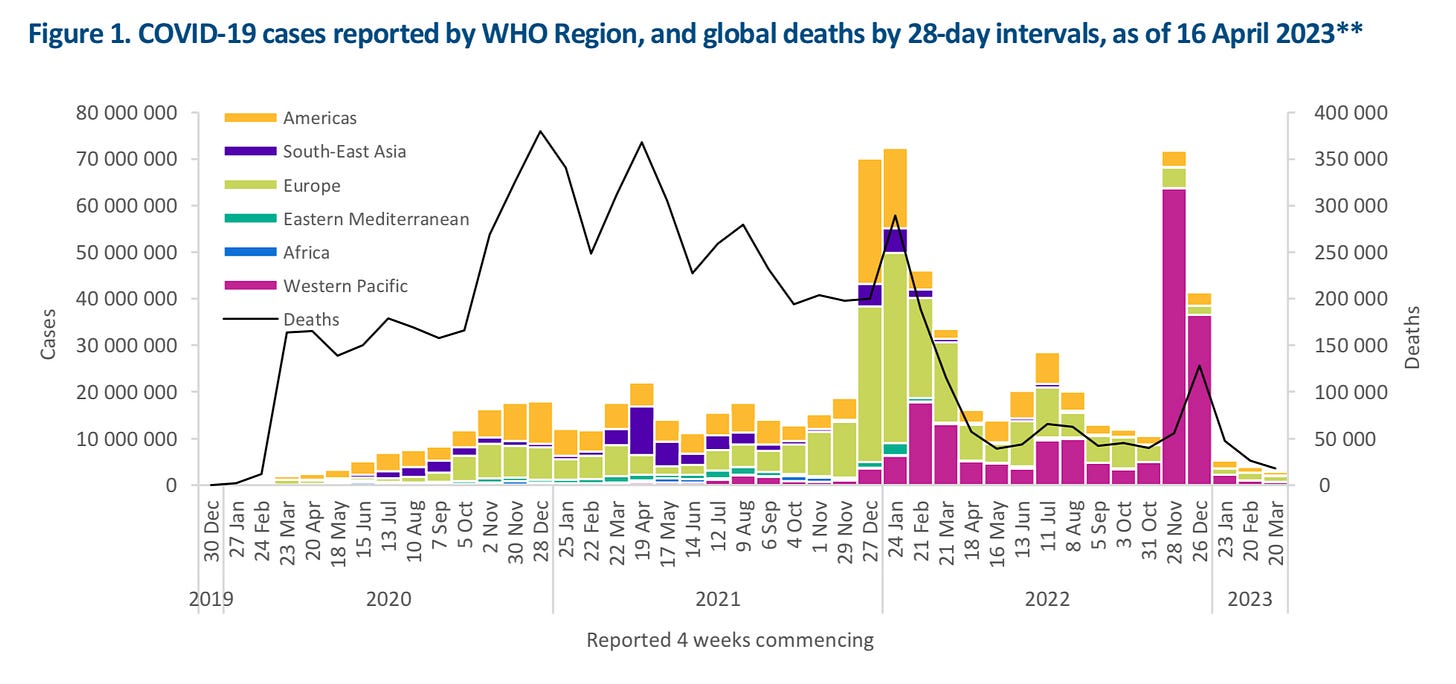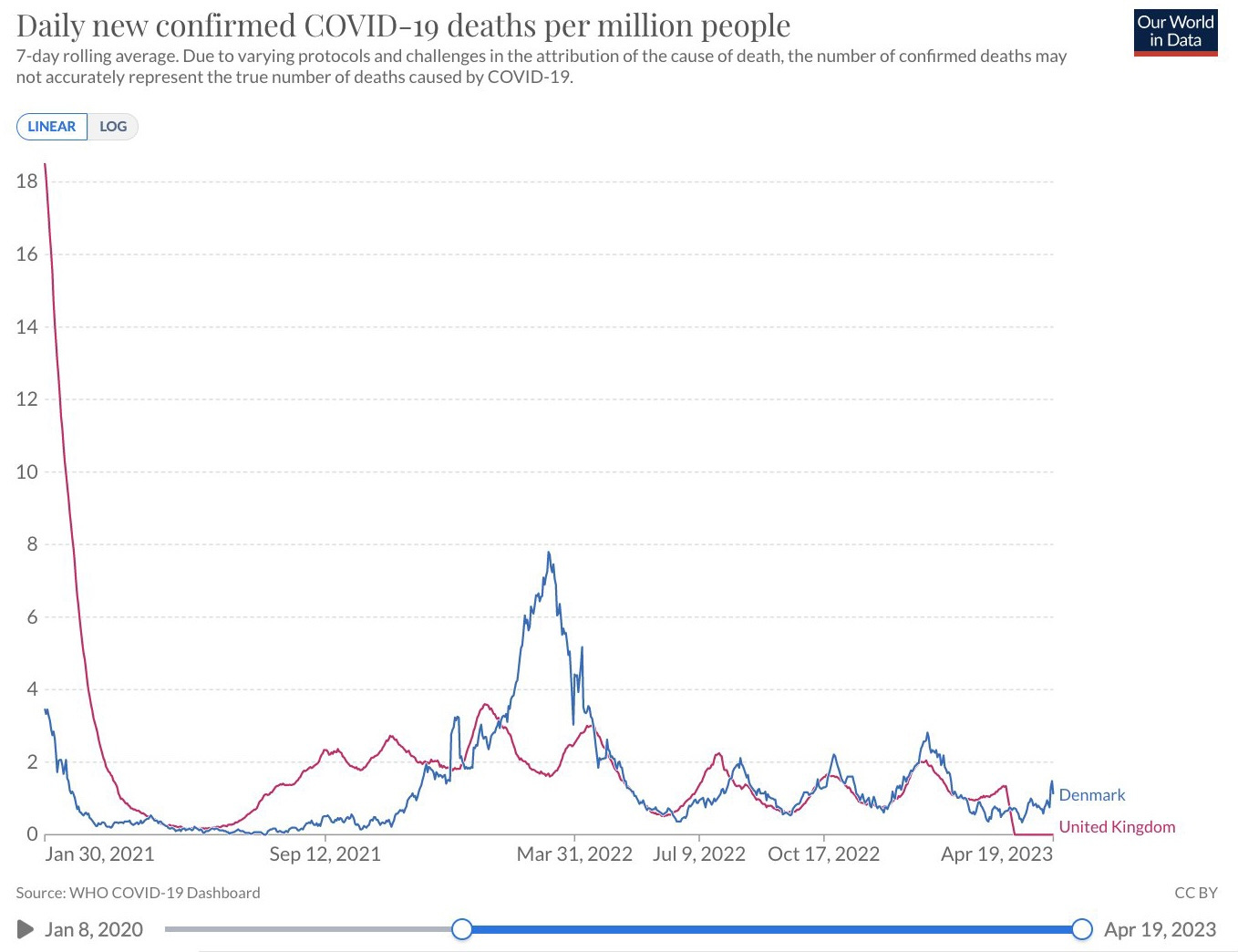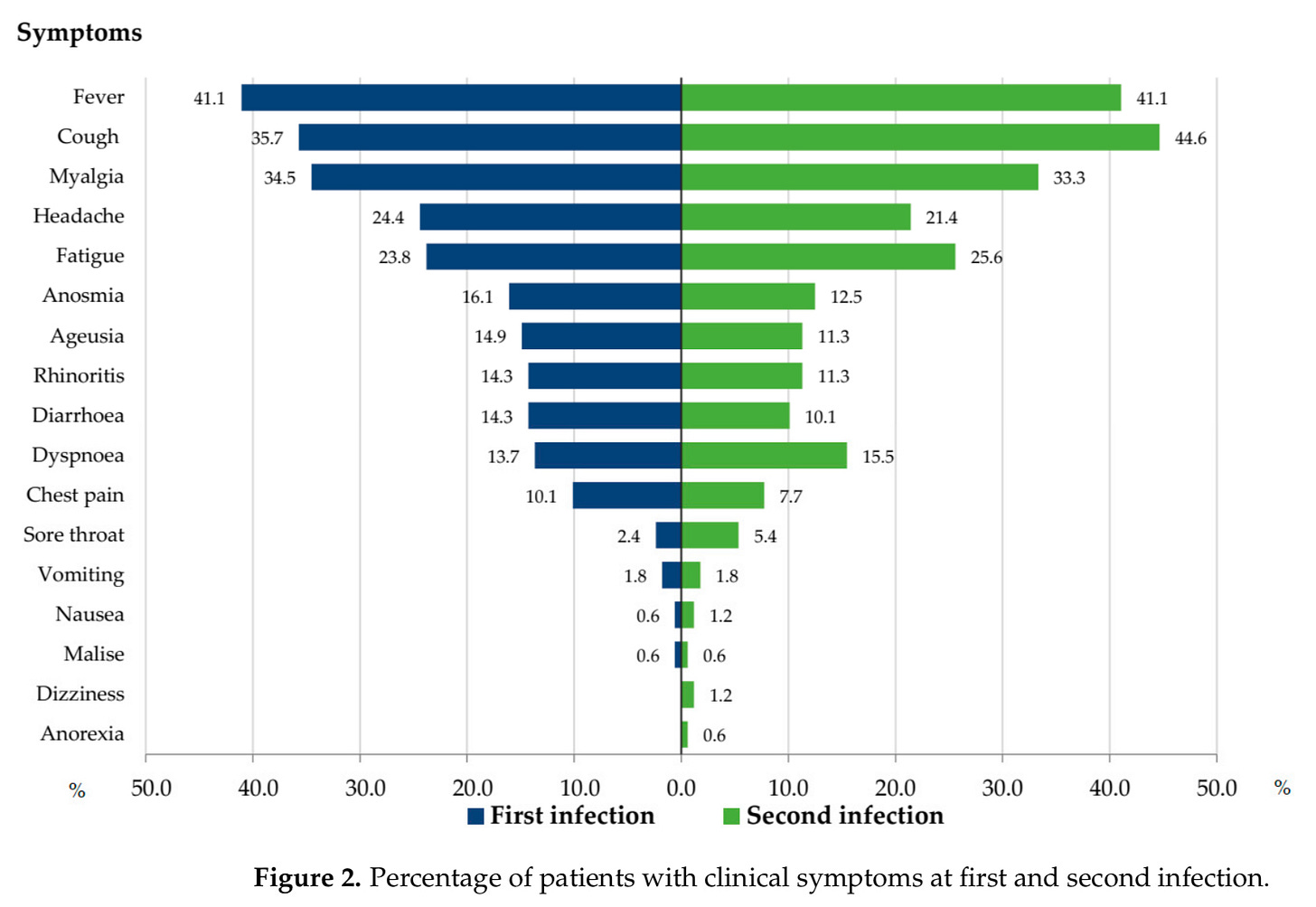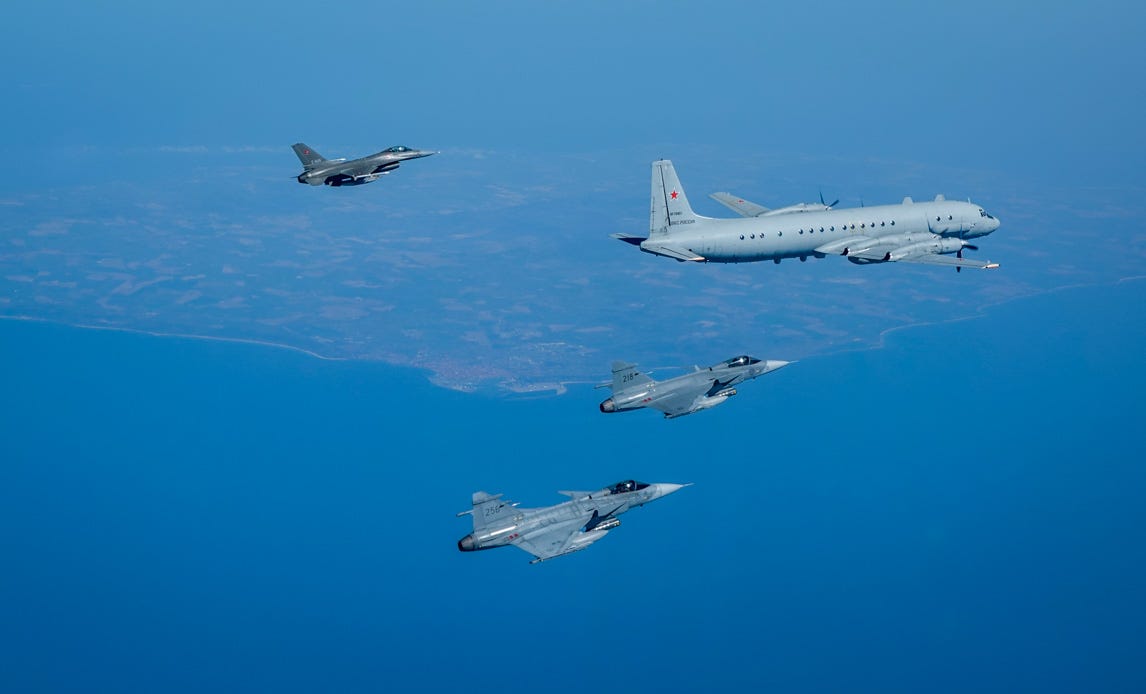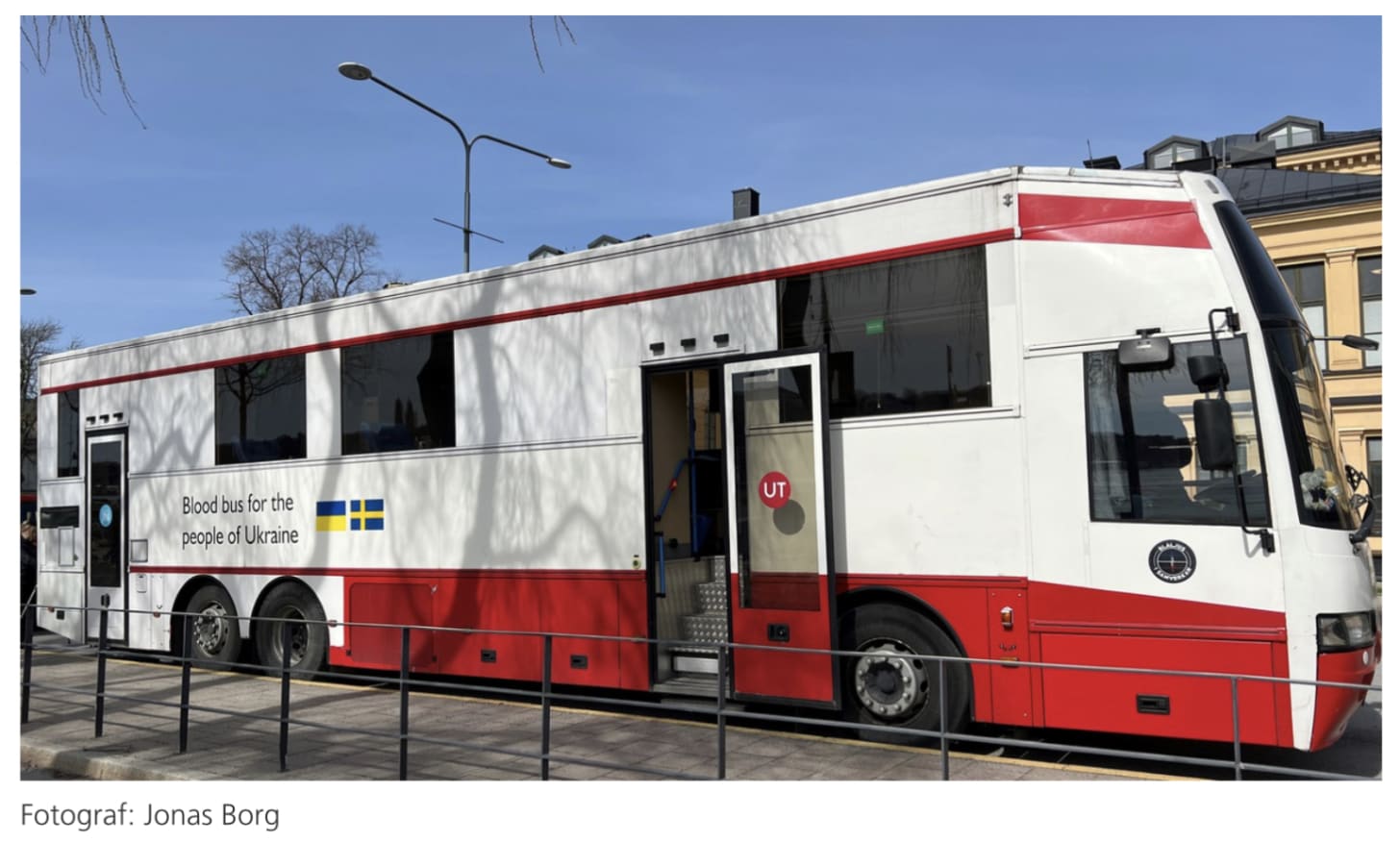Monday Morning News & Notes
Global COVID trouble spots. Nordic countries wary of Russian espionage.
🦠Pandemic🦠
🦠
Two new coronavirus variants have been identified by epidemiologists and their designation for the strains, both evolving from XBB.1.16, have caught a lot of attention. The two variants have been designated FU.1 and FU.2.
New COVID variants are popping up all the time, in fact, these two new strains were a part of 13 that had been newly identified. As of yet, the FU variants haven’t been proven to be especially threatening but the names themselves have drawn quite a reaction.
🌍 🦠
Citing its rapid growth and increased ability to slip around antibody protection, the World Health Organization has upgraded the XBB.1.16 strain from a Variant Under Monitoring to a Variant of Interest.
The global health agency says there have been 3,648 sequenced positive tests as of April 17, with most of those (63.4%) coming from India. It says in India, XBB.1.16 has grown from 15.3% of cases to 58.6% in a matter of weeks. The variant has, so far, been reported to be active in 33 countries, including Canada, the United States, Australia, Japan, and the United Kingdom.
In its latest threat assessment, the WHO notes that while this strain is the most infectious yet and has an increased ability to slip by immune protection, it poses a low risk. That is because it has not been proven to cause any more severe infection, the litmus test for hitting the alarm button. That said, the agency does note that hospitalizations have increased slightly in India and Indonesia but at much lower numbers than any previous infection wave.
“However, XBB.1.16 may become dominant in some countries and cause a rise in case incidence due to its growth advantage and immune escape characteristics.”
The WHO is urging countries to continue testing and sequencing positive test results and share their findings. Needless to say, very few countries are needing the health agencies’ pleas to continue testing as we grow increasingly blind to pandemic developments.
-
Global coronavirus cases continued to decline around the globe, largely due to plunging testing rates. With over 2.8 million new infections in the latest 28-day reporting period, ending April 16, the WHO says there were over 2.8 million new infections, a drop of 27%. COVID deaths also fell with another 18,000 lives lost, 32% fewer than the previous 28 days.
But while cases and fatalities decrease, global hospitalizations are going the opposite direction, as they rose by 4% or 75,486 new admissions. This is across the 52 countries that report hospital data to the World Health Organization.
Contrary to the global downward trend infections and deaths are still rising in two of the six WHO regions and in several countries.
“Reported COVID cases are underestimates partly due to the reductions in testing and delays in reporting in many countries.”
Of the six global health regions, South East Asia saw the biggest increase in infection activity (+654%) while also seeing pandemic deaths jump (+210%). The other region of concern is the Eastern Mediterranean where infections also rose (+96%) as did pandemic deaths (+134%). Numbers declined in the other four regions.
The United States continues to record the highest number of coronavirus cases of any nation on earth with 432,789, despite case numbers dropping by almost half. It also continues to see by far the most deaths with another 5,559 American lives lost (-32%). In a number of other countries COVID numbers are surging upward. They include India (+1,068%), Nepal (+1,933%), Qatar (+267%), Saudi Arabia (+203%), Indonesia (+125%), South Korea (+65%), France (+65%), and Brazil (+35%).
With 312 pandemic deaths, India saw the largest increase by percentage (+643%). Brazil is also seeing a lot of COVID deaths with 1,177 (-26%). Iran also remains a concern with 754 more lives lost (+193%). With 994 fatalities Russia continues to be in a troubling position. Germany is also seeing too many coronavirus deaths with 813.
Ukraine with 17,423 new admissions (+26%), France 10,485 (+39%), and Italy 8,886 (-25%) saw the most new hospitalizations. With 959 new ICU cases France (+33%) had the most new intensive care patients followed by Ukraine (438 admissions) and Italy (294).
The WHO currently has two coronavirus strains on its Variants of Interest list, XBB.1.5 and XBB.1.16. Variants Under Monitoring include six strains, BA.2.75, CH.1.1, BQ.1, XBB, XBB.1.9.1, and XBF.
🇪🇺🦠
The European Centre for Disease Prevention and Control’s latest pandemic assessment shows COVID numbers at “low to moderate” levels across the EU in the week ending April 16.
Across the individual countries, the 14-day infection rate among vulnerable seniors over 65 increased in three countries, Sweden, Finland, and Latvia. The overall infection rate across all age groups also rose in Finland, the only country to see an increase.
Latvia and Slovakia were the only two countries to report rising numbers of pandemic-related hospital admission while Lithuania was the only country to report increasing intensive care admissions.
There wasn’t a single country in Europe that reported an increase in coronavirus deaths.
Uptake for a 2nd vaccine booster dose remains pitifully low among vulnerable seniors over 60 in Europe with just 14.3% availing themselves of the protections the variant-specific vaccine doses offer.
Just three countries in the European Union are testing for COVID and sequencing positive results in numbers high enough to derive any serum information from. As pandemic developments become more opaque in Europe from what the ECDC can tell with such a dearth of information the XBB.1.5 variant remains dominant in the E.U.
🇩🇰/ 🇬🇧
University of Oxford Professor of Virology and Immunology Astrid Iversen, who was a member of a committee advising the Danish government on its pandemic response, is singling out Denmark’s booster dose strategy, or lack thereof.
Specifically, Iversen is pointing to the difference in pandemic deaths between Denmark and the United Kingdom. The UK initiated another spring booster dose campaign at the oldest and most vulnerable in its population. Denmark did not.
“Denmark is still exposed to one wave of corona virus after another. We are starting a second wave this year when you look at hospitalizations. It is thought-provoking to compare deaths in the UK and Denmark, possibly the effect of spring boosters.”
🇪🇺 🇵🇱 🦠
COVID surveillance in farmed and wild animal populations needs to become more rigorous to avoid variants evolving and then potentially jumping to humans. The warning was sounded by the European infectious disease journal, Eurosurveillance. In a recently published paper, the journal notes the detection of a ”cryptic” coronavirus variant found among farmed mink in Poland. Animals on three different farms tested positive over a period of several months from late last year to early this year. The source of the infection remains unknown although the farms were in close proximity. Genome testing showed the variant had at least 40 genetic changes leading researchers to believe it had originated from an unknown or undetected animal reservoir.
A working theory after comprehensive investigations is that the farmed mink may have encountered some wild animals like feral cats or martens with the virus passing from one to the other.
“Conducting routine surveillance for SARS-CoV-2 on mink farms seems necessary, since the animals described here were asymptomatic, and the viruses would have gone undetected without mandatory viral surveillance. It seems that relying only on passive surveillance in response to symptomatic outbreaks could result in many cases being overlooked.”
Poland is the second largest supplies of farmed mink behind China. It had initiated some COVID surveillance of its farmed mink populations after the mink strain scare in Denmark led to the country culling all of its farmed mink in late 2020.
🦠🌎
Natural immunity due to having had a coronavirus infection may not be all that long-lasting. That is the conclusion to a new systemic review, which analyzed the results of 23 different studies coming from around the world.
The analysis found that reinfections were more prevalent during the Omicron wave. People middle-aged, women, and healthcare workers, having underlying health conditions, getting COVID during the Delta or Omicron waves, and being unvaccinated all increased the risk of having a second infection.
The most common symptoms during the first and second bouts of COVID included fever, cough, fatigue, and headaches. No major clinical difference, including no difference in severity, was found between the first and second infections.
Researchers found that reinfection risk rose from 0.2% to 6.8% from the second to the fifth infection wave. On average, the time between recovering from first infection to getting infected again was about five months.
“Reinfection with SARS-CoV-2 does occur, suggesting that natural immunity is not long-lasting in COVID patients. Female patients seem more likely to experience reinfection than male patients. Thus far, no clear evidence for a difference in severity between the first infection and reinfection has been observed.”
The study is noted to have its limitations including data on vaccination status that was “too heterogeneous to allow strong conclusions about the effectiveness of vaccination in lowering reinfection rates.”
The research paper in full can be found HERE.
🇨🇦 🦠
There seems to be growing evidence that a COVID infection could increase the risk of diabetes. A study from the Canadian province of British Columbia found that men who had a coronavirus infection were 22% more likely to develop diabetes within eight months after infection than men who have never been infected. The study involved 629,935 people with an average of 32 over the course of a year.
The study also found that severely infected people who had to be hospitalized due to infection were 2.4 times more like to develop diabetes than someone who had not been infected. The chance of getting diabetes was even higher, 3.29 times as likely, among those requiring intensive care.
“These results suggest that infection with SARS-CoV-2 may have contributed to a 3% to 5% excess burden of diabetes, which may be associated with a substantial number of diabetes cases with bearing on health care needs for the management of diabetes and its complications. Our study highlights the importance of health agencies and clinicians being aware of the potential long-term consequences of COVID-19 and monitoring people after COVID-19 infection for new-onset diabetes for timely diagnosis and treatment. This association was only found for non-insulin-dependent diabetes, and the study was not able to distinguish between type 1 and type 2 diabetes using the data they had available.”
The study in full can be found HERE.
🇺🇦/ 🇷🇺 War
🇩🇰 🇫🇴/ 🇷🇺
More fallout from the Nordic documentary series alleging Russian ships under various guises have been actively gathering intelligence for possible espionage activity. A discovery onboard two Russian fishing vessels docked in Norway seems to indicate Russia is taking advantage of the Faroe Islands to conduct its intelligence-gathering activity.
Two Russian fishing vessels, Lira and Ester, sailed last year from the Faroe Islands to a port in Norway. While docked Norwegian police conducted a routine inspection and found a concealed radio room with Russian military communications gear.
Denmark’s public broadcaster DR mapped the movement of the two ships and found that the two Russian vessels have docked in the Faroe Islands more than 200 times since 2015.
Former Swedish Navy Head Rear Admiral Nils Wang says the Russian presence in the Faroe Islands poses a direct threat.
“You must be aware that all movements and daily life on the Faroe Islands are constantly being monitored by the Russian ships that are in the area. And there are always Russian ships in Faroese areas.”
Russian ships are blocked from entering European Union and United Kingdom waters or docking at any EU and UK ports due to sanctions over Russia’s invasion of Ukraine. But the Faroe Islands are not members of the EU. Russia also has trade and fishing agreements with the islands.
While technically part of the Kingdom of Denmark, the Faroe Islands have been self-governed since 1948. While Denmark still has a hefty say in defense, justice, and foreign affairs matters over the island its trade policies are independent.
Danish Acting Minister of Defense Troels Lund Poulsen spoke to DR and was asked if his government would now ask the Faroe Islands to block Russian vessels from docking there.
“If these ships are used in relation to espionage, it also requires that we on the Danish side do more than we have done before. This is a Faroese matter in relation to the fisheries agreement [with Russia]. But it is clear that if there is espionage against the Commonwealth, then Denmark also has an obligation to act.”
🇫🇮 🇷🇺
Security must be stepped up around Nordic energy and communications infrastructure including underwater cables and pipes to prevent Russian espionage. This is according to Finnish President Sauli Niinistö who was reacting to a Nordic documentary from the public broadcasters of Sweden, Denmark, Norway, and Finland that found a fleet of Russian vessels posing as fishing trawlers and research ships to gather information on energy infrastructure. The documentary alleges this is possibly in preparation to sabotage wind farms, gas pipelines, and communication cables in the Baltic and North Seas.
Speaking to Yle Niinistö said underwater cables and similar infrastructure is a very “sensitive area that has apparently been mapped out if the observations are correct. Then of course the question arises, how can we develop ways to defend ourselves and secure these links.”
But he added that the difficulty is that a lot of this infrastructure lies in international waters, which allows for the unhindered transit of all ships and vessels.
-
Finnish companies are increasingly finding themselves to be the targets of cyber-attacks. In a joint press conference on Friday, the Finnish Transport and Communications Agency and the Finnish Security and Intelligence Service said they were working more closely together to combat the rising cyber threat. The agencies say that cyber-attacks be they denial of service assaults, attempts to spread malware or data breach attempts, are now a daily occurrence.
According to the Finnish national security agency, SUPO, cyber-espionage attempts from Russia continues to increase. It says Russia is turning more and more to online espionage to make up for a lack of human intelligence gathering hampered by travel restrictions and the expulsion of its spies posing as diplomats.
🇩🇪/🇷🇺
Diplomatic relations between Russia and Germany continued to sour over the weekend after tit-for-tat expulsions of diplomats. It began when German media citing sources reported that Germany would declare more than 30 Russian diplomats personae non gratae. As in other cases across Europe, the Russian diplomats were accused of being spies and using their diplomatic status to gather information that could be potentially used for espionage.
In response, Russia’s Ministry of Foreign Affairs announced it would expel more than 20 German diplomats in retaliation.
🇩🇰 🇸🇪/ 🇷🇺
For the first time Danish and Swedish fighter jets have worked together to intercept and shadow a Russian military aircraft. It happened over the Baltic Sea late last week.
Danish Air Command Operations Department Head Lieutenant Colonel Hans Skovmose:
“The operation shows how far we have come in our cooperation with Sweden. It is the fruit of several years of work to link the Nordic countries closer together. It is very satisfying to see the collaboration run so smoothly.”
The four fighter jets, two Swedish Gripens and two Danish F-16s were scrambled to intercept a Russian IL20-COOT-A military aircraft heading west from the Russian enclave of Kaliningrad. The Nordic fighters stayed with the Russian airplane along its route before breaking off and returning to their respective home bases. The Danish Armed Forces say the Russian aircraft was in international airspace for the duration of the encounter.
Danish Acting Defense Minister Troels Lund Poulsen:
“We live in an uncertain time, which is fundamentally characterized by Russia's aggressive behaviour. We must expect that the Baltic Sea area will be an area of higher levels of tension than we have been used to. We have close and solid cooperation with Sweden, and therefore we also view a Swedish NATO membership very positively, which will strengthen security in the Nordics, in Europe and the entire transatlantic area.”
Danish Armed Forces called it a routine operation noting Nordic fighters are routinely scrambled to intercept Russian patrols and other aircraft flying over the Baltic.
Denmark has two fighter jets on standby 24 hours a day at Skrydstrup Air Force Base in Sønder Jutland.
🇫🇮 🇺🇦
Finland is stepping up with its 15th donation of military equipment to Ukraine. The Finnish Ministry of Defense announced that it will send ‘defense training equipment’ to the 30,000 Ukrainian troops taking part in the ‘European Union Military Assistance Mission in support of Ukraine’ operation in Poland. The EUMAM effort aims to provide basic and specialized military training to Ukrainian soldiers.
Defense Minister Antti Kaikkonen
“Ukraine needs various types of support. We're participating in the EU's training mission by training Ukrainian soldiers, along with necessary material assistance.”
As is its custom Finland wouldn’t disclose any specifics about what exactly it is supplying or when it might arrive.
🇫🇮 🇸🇪
While Finland is now a full member of NATO, there doesn’t seem to be much in the way of movement in welcoming Sweden into the alliance. Finland’s President Sauli Niinistö says there is no new information yet. He told Yle that Turkey may be holding off to try and force Sweden to revise its terrorism laws to something it finds more acceptable.
Turkey and Hungary continue to be the only NATO member nations to hold up Sweden’s inclusion into the alliance.
🇸🇰 🇺🇦
Slovakia confirmed over the weekend that it has handed over the 13 MiG-29 fighter jets it had promised to donate to Ukraine. The Slovakian Ministry of Foreign Affairs said on its website the jets were delivered by land and the handover was done with maximum security.
NATO/ 🇩🇰
One of the names being considered for the top job at NATO is the current Prime Minister of Denmark. Norwegian media outlet VG has confirmed “at a high diplomatic level” that Mette Frederiksen is being heavily considered to be the next NATO Secretary-General. Jens Stoltenberg has held the post since 2014 but his term is set to expire this fall. VG reports that there is still a possibility that Stoltenberg could have his term extended again due to being so well respected and the ongoing war in Ukraine. But he has on several occasions reiterated he plans to leave the position and return to Norway this fall.
If a new Secretary-General is to be named at NATO the clock is ticking and the summer alliance summit in Vilnius, Lithuania would be the most opportune time to make such an announcement.
Mette Frederiksen a long-time politician has been Prime Minister of Denmark since 2019 and won re-election just last year. Another name for the position being floated is former Finnish Prime Minister Sanna Marin who recently lost a re-election bid and has indicated she will be making an exit from the Finnish political scene.
🇪🇸/ 🇺🇦
More Leopard tanks will arrive in Ukraine soon. Spain’s Minister of Defense Margarita Robles told reporters on Saturday that a ship carrying six Leopard tanks along with 20 heavy transport vehicles left a Spanish port and was on its way to Ukraine.
Robles said last week that in addition to the six Leopard tanks now en route to Ukraine, that Spain would supply four more once the tanks had been repaired and refurbished. Spain has also provided training on the tanks to Ukrainian soldiers and support mechanics.
🇸🇪 🇺🇦
Sweden’s capital region is giving a blood donation bus to Ukraine. Region Stockholm decided to donate the bus after a request from a Ukrainian aid organization. The bus left Stockholm for Ukraine last week.
The region says the 14 meter long vehicle will help increase mobile blood donations in Ukraine, blood that can help treat cancer, chronic diseases, and soldiers injured in the war.




